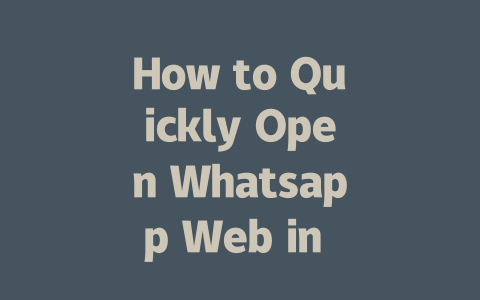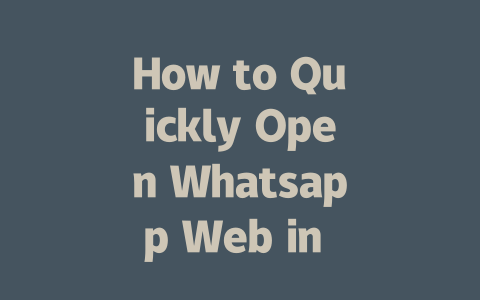文章目录▼CloseOpen
Crafting Titles That Hook Readers
Let me start with something simple but super effective: crafting better titles. Why does this matter so much? Because when someone types “latest world news” into Google, the search robot looks at your title first to see if it matches what they’re searching for. If your title doesn’t clearly say what your article is about, chances are good that people won’t click on it.
Here’s a tip I learned from experience: place your main keyword near the front of the title. For example, instead of saying “What’s Happening Around Us – Latest World News,” try flipping it around to “Latest World News – What’s Happening Around Us.” This makes it easier for both readers and Google robots to understand what your article covers.
Real-Life Example: Testing Different Title Formats
Last month, I tested two versions of a headline for an article about breaking business news. The first version was more formal: “Analysis of Current Business Trends in 2025.” Guess what happened? Hardly anyone clicked on it. Then I changed it to “Breaking Business News 2025 – Key Trends Explained.” Within days, clicks doubled! Why? People scanning headlines want quick answers, not complex analysis.
Another thing to consider is adding urgency or curiosity triggers. Phrases like “just updated,” “must-know facts,” or even numbers (e.g., “top 7 stories”) often work wonders because they make people curious enough to click.
Tools You Can Use
After writing your title, run it through tools like Hemingway Editor or Grammarly (which checks readability) to ensure it flows well. These aren’t perfect, but they help spot awkward phrasing before publication.
Writing Content That Keeps Readers Engaged
Now let’s dive into the meat of the article itself. Once someone lands on your page, the next challenge is keeping them there long enough to actually read the content. How do you achieve that? By structuring your content logically and making sure every sentence adds value.
- Start Strong: Your opening paragraph should immediately address the reader’s question or need. For instance, if your article is titled “Top 5 Breaking Stories Today,” begin with a summary of those five stories rather than burying them halfway through the text.
- Use Subheadings Wisely: Break up large chunks of text with clear subheadings. Think of these as mini-titles—they give readers visual cues about where specific information resides. A good rule of thumb is to have one subheading per 150–200 words.
|
Content Element
|
Why It Matters
|
|
Short Intro Paragraphs
|
Helps maintain attention span.
|
|
Clear Headlines
|
Guides readers quickly to relevant sections.
|
As mentioned earlier, Google values clarity and organization. When their search bots crawl your site, they look for patterns that indicate high-quality content. One way to improve structure is by using bullet points or numbered lists where appropriate. They break down complicated ideas into digestible pieces.
Practical Tip: Keep Sentences Short
Try to keep sentences under 20 words whenever possible. Longer ones may confuse readers or slow them down unnecessarily. Plus, shorter sentences tend to score higher in readability tests, which indirectly impacts SEO performance.
Building Authority Through Trustworthy Sources
Finally, let’s talk about trustworthiness. In the realm of latest news, credibility counts big time. Imagine reading an article claiming aliens landed yesterday without any references—it wouldn’t feel reliable, would it? That’s why citing trustworthy sources strengthens your authority.
For example, if you write about climate change updates, referencing studies published by NASA or NOAA lends instant gravitas. Even linking to other reputable websites helps establish connections between your work and established leaders in the field.
Google itself emphasizes this point in its quality guidelines: users expect accurate, factual information supported by evidence. To implement this, always double-check facts before publishing and include links to original sources where applicable. Just remember to add rel="nofollow" tags to external links unless absolutely necessary for indexing purposes.
- So here’s my final thought: creating SEO-friendly latest news articles isn’t rocket science—it just takes focus on details that matter most. From optimizing titles to delivering engaging, well-researched content, each step builds upon the last. And hey, if after trying these tips you still face issues, drop me a line—I’d love hearing about your journey!
If you’re wondering about the devices that work with Whatsapp Web in 2025, rest assured it’s pretty versatile. You can use Whatsapp Web on both Windows and Mac computers without any issues. Beyond just PCs, any device with a decent browser—think Chrome, Firefox, or Edge—and a stable internet connection is good to go. The only catch? Your phone needs to stay connected to the internet for everything to run smoothly. It’s like your phone is the brain, and your computer is just an extension of it. So, if your phone goes offline, expect your desktop session to stop working too.
When it comes to scanning the QR code, things are usually quick—if your phone cooperates, that is. A smooth scan generally takes under 10 seconds, assuming your camera works well and your internet is solid. But here’s the thing: if lighting is bad or your connection hiccups, it could stretch up to 30 seconds. Security-wise, using Whatsapp Web on public computers isn’t a terrible idea as long as you remember to log out afterward. To beef up protection even more, Whatsapp has two-step verification, which adds another layer of safety when signing in from unfamiliar browsers. Just don’t forget, sharing your QR code or login info isn’t wise—it’s kind of like handing over the keys to your digital life. And while multiple sessions might open across different devices, they won’t sync updates in real time unless used one after another. So no, 5-12 people can’t access the same session simultaneously—that’s just not how it rolls.
Frequently Asked Questions
# What devices support Whatsapp Web in 2025?
Both Windows and Mac computers support Whatsapp Web. Additionally, any device with a modern browser (like Chrome, Firefox, or Edge) and internet access can open Whatsapp Web. However, your phone must remain connected to the internet for it to work properly.
# Can I use Whatsapp Web without connecting my phone?
No, Whatsapp Web requires your phone to stay connected to the internet. This is because all messages and data are synced through your mobile device. Even though you’re using a desktop browser, the app relies on your phone as the primary source of information.
# How long does it take to scan the QR code for Whatsapp Web?
Scanning the QR code typically takes less than 10 seconds if your phone’s camera works smoothly and has a stable internet connection. If there are issues with lighting or connectivity, it might take slightly longer (up to 30 seconds).
# Is it safe to use Whatsapp Web on public computers?
Yes, but only if you log out after each session. Avoid leaving your account open on shared or public devices. Whatsapp also offers two-step verification to add an extra layer of security when accessing your account from new browsers.
# Can multiple users access the same Whatsapp Web session at once (e.g., 5-12 people)?
No, only one user can actively use a single Whatsapp Web session at a time. While multiple sessions can be opened across different browsers/devices, they will not synchronize real-time updates unless used sequentially. Sharing your QR code or login details is not recommended for privacy reasons.




